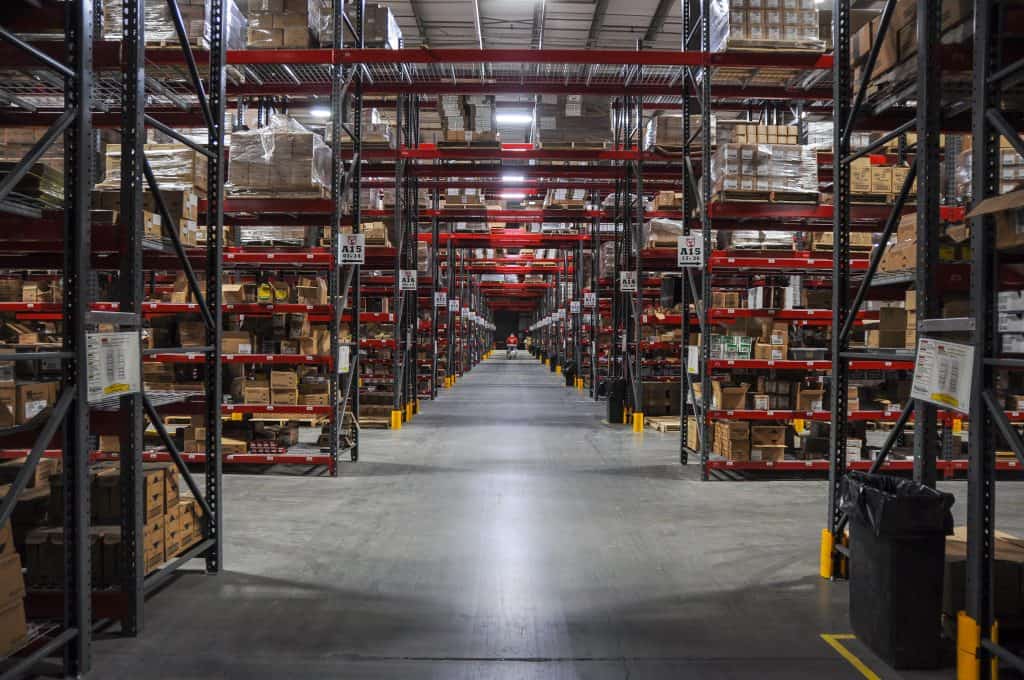The traditional business model of handling many or all operations in-house isn’t always the most productive. This is particularly true for small eCommerce businesses. Many eCommerce companies have been able to expand operations while operating on a shoestring. Third-party logistics services allow you to partner with pros on one of the most important aspects of your eCommerce business. That allows you to focus on marketing, growth, and customer satisfaction.

A third party logistics company can store your inventory for you. It will pick, pack, and ship your products. 3PL is the vital link between your manufacturing operations and your customers. When your order fulfillment operations run smoothly, your customers are happy and your business grows. It’s not an exaggeration to say that excellent fulfillment is the key to success for eCommerce companies.
Before you start working with a third-party logistics company, it’s important to understand what 3PL is. This piece details how you can integrate third-party logistics into your operations, and how to find the best 3PL partner. If you already know that this is what you’re looking for, Contact us.
What is third-party logistics?
Third-party logistics, or 3PL, is used interchangeably with fulfillment warehouse or fulfillment center. Companies that provide 3PL services offer many of the same services as order fulfillment companies. These services include:
- Warehousing
- Inventory management
- Shipping and receiving
- FTL and LTL freight shipping
- Picking and packing
- Kitting and customization
- Reverse logistics (returns)
A third-party logistics company acts as an eCommerce fulfillment company. It provides all the services you need to outsource your logistics operations.
Different 3PL services companies specialize in different types of fulfillment and warehousing. Some are equipped for cold fulfillment. These warehouses can store and ship food products that need to be refrigerated or frozen. Other 3PL companies are prepared to store and ship hazardous materials. Red Stag Fulfillment is one of the top third-party logistics providers for heavy, bulky, and high-value products.

What is 3PL?
3PL stands for third-party logistics, described above. The term third-party logistics is often also used interchangeably with order fulfillment. A third-party warehouse provides a full range of eCommerce fulfillment services. This can include warehousing, order processing, and shipping and receiving. Many 3PL warehouses provide other services. These can include customer support, returns processing, and customization.
The 3PL business model is the most common type of outsourced logistics company. There are other types such as 4PL and 5PL, but by far most companies large and small are interested in 3PL.
Third Party Logistics (3PL) Basics
Third-party logistics providers manage inbound and outbound transportation for their clients, as well as warehousing. Most 3PL companies own or lease warehouse space, which they provide to their clients. They generally don’t own their own fleet of trucks but contract with other carriers for freight and shipping.
Third-party refers to the fact that you’re outsourcing your order fulfillment. You don’t own the warehouse. Instead, you rent shelf space for your products in a large warehouse that stores products for multiple companies. Warehouse employees receive your products and place them into inventory. They pick items from shelves to fill orders and pack them securely for shipping. The 3PL works with various carriers to deliver orders to your clients.
Third-party logistics warehouses are designed to maximize speed and efficiency. As your business grows, they can handle the extra volume and you can expand your capacity without hiring additional staff. A 3PL can work with you on ways to reduce your shipping costs and delivery times. When you use a 3PL company for your eCommerce fulfillment, you get the benefit of experience and focus.
Let’s delve into the specifics of how outsourced fulfillment works with your business.

The third-party logistics process
When you outsource your fulfillment, your products ship directly from the factory to the 3rd-party logistics warehouse. Once your inventory arrives, the third-party logistics company can provide a range of services. Here are just a few of the elements of the 3PL process.
eCommerce platform integration
Most eCommerce businesses depend on multichannel selling to survive. To support this, your fulfillment warehouse needs strong IT. The best fulfillment companies integrate seamlessly with multiple sales platforms. Your provider should support all your sales channels or be able to create a custom API. In addition, you should be able to view and track the progress of your orders in real time online, via a dashboard.
FTL and LTL freight shipping and receiving
Full truckload (FTL) and less than truckload (LTL) freight can be essential tools to save you money on freight. This is particularly true if you often ship large orders to commercial customers or wholesale orders to retailers. You can also use freight services to ship your products between warehouses or to a distribution point closer to your customers. Your outsourced logistics company can guide you through this process. It can arrange for FTL or LTL loads and process incoming truckload freight. Your 3PL can also help you find the best deals and the right service level for your freight shipping.
Inventory management
When you work with a third-party logistics company, you no longer have to go it alone. Your 3rd-party logistics partner has valuable experience with inventory management. Your account rep can apply lessons learned from working with many eCommerce companies to help you manage your stock. Reach out for advice on restocking levels, supply chain management, and ideal seasonal inventory levels.

Picking, packing, and shipping
Pick, pack, and ship services are the core of order fulfillment. When your customer places an order through one of your sales channels, it goes directly to your fulfillment warehouse. There, a picker finds the items for the order on the shelves. Then a packer selects the perfect box – not too big, not too little – and packages the order. The packer also applies the shipping label. Finally, the shipper makes sure the order gets picked up by the right carrier as soon as it’s ready to go.

Same-day shipping
Your third-party logistics provider may offer same-day shipping. This service means that your customer orders are picked, packed, and shipped on the same day they are received. There is usually a time cutoff for same-day shipping. For example, Red Stag Fulfillment offers two levels of same-day shipping service. One has a 3 pm cutoff; the other will ship orders that arrive as late as 5 pm on the same day. Same-day shipping gets your orders to your customers faster. And faster delivery leads to more satisfied customers.
Reverse logistics
Reverse logistics is a fancy term for returns. Returns are simply a fact of life in eCommerce. Your return rate will depend on a number of factors, including the type of merchandise you sell. Products that are sized, such as clothing and shoes, have much higher return rates than the industry average. Your eCommerce fulfillment company can accept and process returned items for you. The reverse logistics process includes examining returned items to assess whether they are damaged or can be returned to the shelf. Reverse logistics can also decrease the time it takes to make undamaged products available for purchase again.
